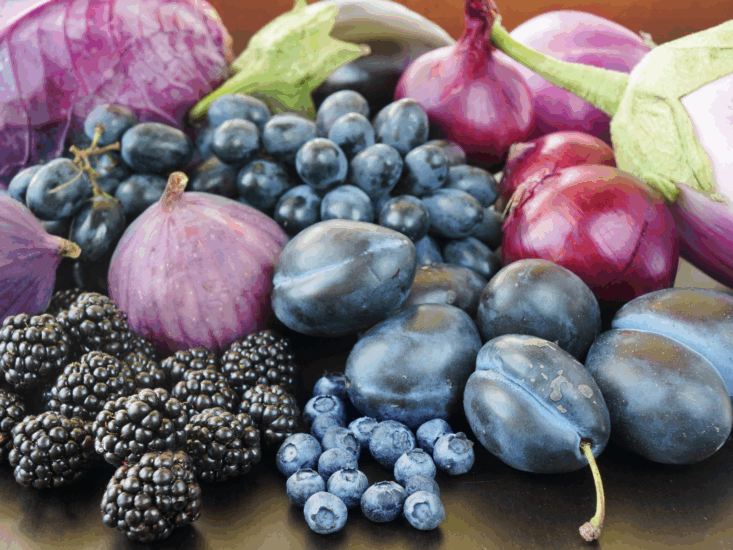
You’ve seen them in smoothies, salads, and grain bowls—those vibrant purple fruits and veggies that seem to pop off the plate. But they’re more than just pretty. Purple foods are rich in a powerful group of antioxidants called anthocyanins, and they come with a long list of health benefits.
What Are Anthocyanins?
Anthocyanins are natural pigments that give certain plant foods their deep red, blue, and purple color. But they do more than color your plate—they help protect your cells from damage, support your heart and brain, and even play a role in keeping your gut in balance.
The Health Perks of Purple Foods
Eating more anthocyanin-rich foods may help:
-
Support heart health by reducing inflammation and improving circulation
-
Boost brain function and help protect against cognitive decline
-
Promote gut health by feeding beneficial bacteria
-
Reduce the risk of certain cancers
-
Protect bone health as you age
Delicious Purple Foods to Add to Your Diet
The best part? These foods are easy to find and easy to love. Add more of these to your meals:
-
Blueberries
-
Blackberries
-
Purple grapes
-
Cherries
-
Plums
-
Red cabbage
-
Purple carrots
-
Purple sweet potatoes
-
Eggplant
-
Blackcurrants
Simple Ways to Eat More
-
Blend frozen blueberries or blackberries into your morning smoothie
-
Roast purple sweet potatoes or carrots for an easy side
-
Toss red cabbage into salads or slaws for extra crunch and color
-
Stir chopped plums or cherries into your yogurt or oatmeal
-
Add roasted eggplant to pasta, grain bowls, or wraps
Purple foods aren’t just a trend—they’re a delicious, colorful way to nourish your body and level up your nutrition. The more color you eat, the better you feel.
Want more easy ways to boost your health with food? Try these:
- 8 Veggies That Help to Lower Inflammation, Say Experts
- 9 Swaps to Get Rid of Inflammatory Foods, Say Dietitians
- 7 Antioxidant-Rich Foods to Ward off Chronic Disease
The post Why Purple Foods Are So Good for You, According to Science appeared first on Clean Plates.